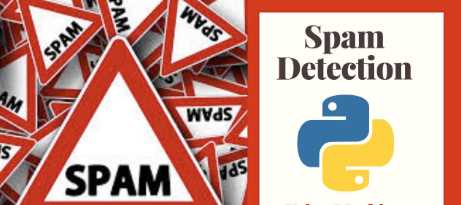In today's digital age, spam emails continue to plague our inboxes, wasting time and posing security risks. To combat this ever-growing problem, machine learning algorithms have become a vital weapon in the fight against spam. By leveraging the power of artificial intelligence and data analysis, machine learning algorithms can accurately identify and filter out unwanted and potentially harmful emails. In this blog post, we will explore the inner workings of machine learning in spam detection algorithms, examining the data-driven approach, feature extraction, and the continuous learning process that enables these algorithms to stay ahead of spammers.
Data-Driven Approach
Machine learning algorithms rely on vast amounts of labeled data to learn patterns and make accurate predictions. In the context of spam detection, this data consists of examples of both spam and legitimate emails. The algorithm analyzes this data to extract meaningful features and identify patterns that distinguish spam from non-spam emails.
By training on diverse datasets, machine learning models can understand the characteristics that differentiate spam emails, such as suspicious sender addresses, specific keywords, or common phishing techniques. As the algorithm encounters new email samples, it uses its learned knowledge to make predictions and classify incoming messages as spam or legitimate.
Feature Extraction
Feature extraction plays a crucial role in spam detection algorithms, as it involves transforming raw email data into meaningful representations that capture relevant information. Machine learning algorithms consider various features, including the email's header information, subject line, body text, attachments, and embedded links. These features are carefully analyzed to extract patterns and signals that can indicate spam.
Common features used in spam detection include the frequency of specific words or phrases, the presence of suspicious URLs, the reputation of email senders, and the analysis of email headers for anomalies or suspicious characteristics. Advanced techniques, such as natural language processing (NLP) and sentiment analysis, can also be employed to extract deeper insights from the email content.
Continuous Learning and Adaptability
Spammers constantly evolve their techniques to bypass spam filters, making it essential for spam detection algorithms to adapt and learn from new patterns. Machine learning algorithms possess the ability to continuously learn and improve their performance over time.
As new spamming techniques emerge, the algorithms can be updated with fresh data to detect and respond to evolving spam patterns. This process, known as retraining, helps the algorithm adapt to new trends and stay ahead of spammers.
Furthermore, user feedback is a valuable resource in the continuous learning process. By incorporating user reports of missed spam or false positives, the algorithm can refine its predictions and further improve its accuracy. This feedback loop ensures that the algorithm evolves alongside the changing dynamics of spam emails.
Conclusion
Machine learning has revolutionized the field of spam detection by leveraging the power of data analysis, feature extraction, and continuous learning. These algorithms enable accurate identification and filtering of spam emails, reducing the risks associated with phishing attacks, malware distribution, and unwanted solicitation.
Through a data-driven approach, machine learning algorithms extract relevant features from email data to distinguish spam from legitimate messages. The continuous learning process allows the algorithms to adapt to new spamming techniques and improve their accuracy over time.
As spammers continue to develop new tactics, the application of machine learning in spam detection algorithms remains crucial. By harnessing the power of artificial intelligence, we can keep our inboxes free from clutter and protect ourselves from the ever-present threat of spam.




Leave Comment